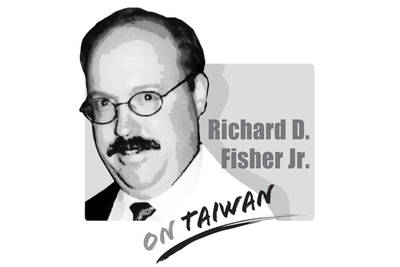Indonesia, the world’s largest tuna fishing nation, has pulled out all the stops in recent years to transform the health of an industry blighted by depleted stocks and illegal poaching.
Measures by the government — which have even included the bombing of foreign vessels fishing illegally in Indonesian waters — have helped fish stocks more than double in the last five years.
But now the industry has reached another important milestone: One of Indonesia’s tuna fisheries has become the first in the nation — and second in Southeast Asia — to achieve the gold standard for sustainable practices.
The PT Crac Sorong pole-and-line skipjack and yellowfin tuna fishery, based in the province of West Papua, has been certified by the internationally recognized Marine Stewardship Council (MSC) standard for sustainable fishing.
The fishery, which has become a beacon of best practice in the region, runs 35 pole-and-line fishing vessels and employs 750 local fishers.
“The efforts made by the fishery to achieve MSC certification will help safeguard livelihoods, seafood supplies and healthy oceans for future generations,” MSC Asia-Pacific director Patrick Caleo said. “We hope to see other fisheries follow their lead by joining the global movement for seafood sustainability.”
PT Crac’s new status should create fresh opportunities within the export market. The UK’s Sainsbury’s and Switzerland’s largest retailer, Migros, are among companies that have already committed to the preferential sourcing of certified Indonesian pole-and-line products.
“We work hard to provide our customers with sustainable seafood products, which is why Migros has committed to preferentially sourcing MSC-certified one-by-one tuna from Indonesia,” said Adrian Lehmann, one of the company’s buyers.
Traditional pole-and-line fishing has been carried out in Indonesia for many generations. PT Crac chief executive Ali Wibisono said the fishery had employed sustainable practices since it was founded in 1975.
However, to meet the international standard it was necessary to collect extensive data, implementing an observer program on the vessels to report on tuna and baitfish catches, and interaction with vulnerable species.
“Having that first certification — hopefully, the first of many for Indonesia — is a proud moment and really puts us on the map. It is an important milestone for the country, but the sustainability of our resources goes beyond the certification,” Wibisono said.
“Our fisheries also have great importance for the people of Indonesia, providing many jobs, food and supporting livelihoods,” he added.
Wibisono said that 25 percent of the fishery’s tuna goes to the local market, while each of the 750 fishermen will take some of the catch home to their family.
The certification should boost the reputation of the Sorong product on the export market, as well as have a positive impact on the labor market locally.
“There will be work opportunities for fishermen in the pole-and-line fleets and also the workers in Sorong’s fish factory,” Wibisono said. “This will attract non-pole and line fisheries to follow our lead and improve the economic turnover in the region.”
Globally, tuna fisheries have an annual value of more than US$40 billion, making improved conservation of the species critical to sustaining marine ecosystems and coastal communities that rely on the industry for food and income.
Indonesia produces more tuna than any other country in the world, with total landings of more than 620,000 tonnes in 2014, according to the latest data published by the Pew Charitable Trusts.
The majority of tuna landed worldwide is taken by fishing vessels using large purse-seine nets to encircle schools of fish, primarily targeting skipjack and yellowfin tuna.
While purse seiners operating in the Indonesian economic zone are responsible for the biggest catches, their environmental impact is much greater than pole-and-line fisheries, which account for 50,000 tonnes a year, according to government estimates.
“The purse seiners are responsible for a higher bycatch and are not as well regulated as what we refer to as the one-by-one tuna fisheries,” said Martin Purves, managing director of UK-based charity the International Pole & Line Foundation (IPNLF), which has supported fisheries in Indonesia and worldwide.
“Our philosophy of one hook, one line, one fish at a time — using pole and line, handline or troll line behind the boat — is recognized as being the most sustainable model,” he said.
The IPNLF this week released a film about sustainable tuna fishing. Following its work with PT Crac, the organization is supporting a further six fisheries in Indonesia to help them achieve MSC certification by the middle of next year.
“We have had support from 12 of our supply chain members, which have signed a joint letter urging fisheries they will switch from any non-MSC tuna to one-by-one tuna from those fisheries in Indonesia reaching MSC certification. That is quite a strong commitment from the market,” Purves said.
In the past, Indonesia has been seen as a country with lots of small vessels operating without proper management, but steps taken by the Ministry of Maritime Affairs and Fisheries (MMAF) have started to bear fruit, Purves said.
“The fisheries minister Susi Pudjiastuti has taken a worldwide lead in terms of addressing illegal fishing in a country that has had major issues in this area,” he said. “A lot of it has been quite public campaigns where vessels have been confiscated or set alight at sea and bombed. But in addition to publicity-grabbing efforts there has been a lot done to improve the legislative framework and great work on transparency.”
Indonesia was the first country in the world to publicly share the positions of its fishing fleets on the public online platform Global Fishing Watch, which uses satellite technology to give real-time tracking information for 70,000 of the world’s largest fishing boats.
In 2014, the MMAF introduced a raft of changes to manage Indonesia’s marine resources, including banning fishing using foreign capital and the use of destructive fishing gear, including trawl nets.
MMAF Deputy Director Trian Yunanda said the policies had led to increased fish stocks and improvement in the prosperity of fishermen and coastal communities, according to figures for 2016 and 2017.
“The data shows that our traditional and small-scale fisheries have benefited, and their catch has doubled, from the implemented policy,” Yunanda said.
“The MSC certification of PT Crac has motivated other tuna fisheries in Indonesia to develop fish improvement projects to address their negative environmental impacts and look at ways to improve,” he added.

As the Chinese Communist Party (CCP) and its People’s Liberation Army (PLA) reach the point of confidence that they can start and win a war to destroy the democratic culture on Taiwan, any future decision to do so may likely be directly affected by the CCP’s ability to promote wars on the Korean Peninsula, in Europe, or, as most recently, on the Indian subcontinent. It stands to reason that the Trump Administration’s success early on May 10 to convince India and Pakistan to deescalate their four-day conventional military conflict, assessed to be close to a nuclear weapons exchange, also served to

The recent aerial clash between Pakistan and India offers a glimpse of how China is narrowing the gap in military airpower with the US. It is a warning not just for Washington, but for Taipei, too. Claims from both sides remain contested, but a broader picture is emerging among experts who track China’s air force and fighter jet development: Beijing’s defense systems are growing increasingly credible. Pakistan said its deployment of Chinese-manufactured J-10C fighters downed multiple Indian aircraft, although New Delhi denies this. There are caveats: Even if Islamabad’s claims are accurate, Beijing’s equipment does not offer a direct comparison
After India’s punitive precision strikes targeting what New Delhi called nine terrorist sites inside Pakistan, reactions poured in from governments around the world. The Ministry of Foreign Affairs (MOFA) issued a statement on May 10, opposing terrorism and expressing concern about the growing tensions between India and Pakistan. The statement noticeably expressed support for the Indian government’s right to maintain its national security and act against terrorists. The ministry said that it “works closely with democratic partners worldwide in staunch opposition to international terrorism” and expressed “firm support for all legitimate and necessary actions taken by the government of India
Taiwan aims to elevate its strategic position in supply chains by becoming an artificial intelligence (AI) hub for Nvidia Corp, providing everything from advanced chips and components to servers, in an attempt to edge out its closest rival in the region, South Korea. Taiwan’s importance in the AI ecosystem was clearly reflected in three major announcements Nvidia made during this year’s Computex trade show in Taipei. First, the US company’s number of partners in Taiwan would surge to 122 this year, from 34 last year, according to a slide shown during CEO Jensen Huang’s (黃仁勳) keynote speech on Monday last week.